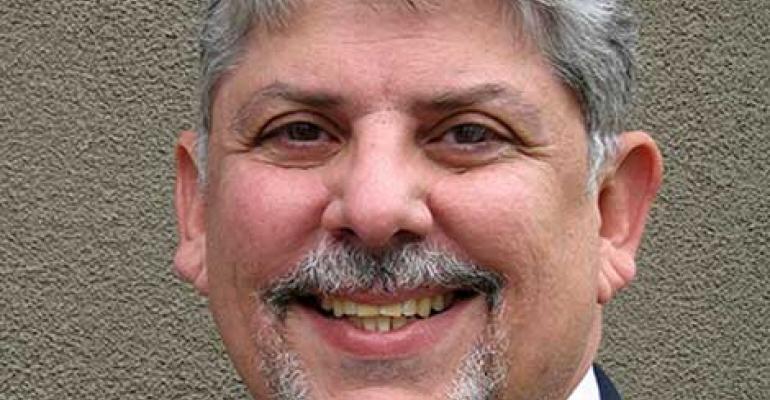In the data center industry, many professionals not only work hard to keep the data center facility of today humming along, but also think deeply about where technology and data centers are headed in the future.
Hector Diaz, the AFCOM Chapter president of the Denver chapter, who manages 1 million square feet of data center space for a large multinational enterprise, will lead a panel discussion on “The Future of the Data Center” at the upcoming Orlando Data Center World conference.
Data Center Knowledge asked him what top trends the panelists will discuss. Diaz said there are several major considerations:
- The data center of the future is the one you don’t own.
- There will be a continuous focus on energy efficiencies, higher power densities and liquid cooling.
- Go beyond peer ratings, existing standards and pushing ASHRAE standards.
Colocation and Cloud Will Rule The Day
Diaz said that the AFCOM audience has smaller (5,000 to 6,000 square-foot) enterprise data centers for the most part. These data centers will be replaced by colocation and cloud software as a service products, such as Salesforce.com.
“No business on its own has the economies of scale,” he said. “When you do the economic analysis, the return on the investment is not there. Operating at a small size you don’t get the economies of scale that the colocation provider or a large enterprise with 250,000 square feet or more of data center space can get.
“Server huggers are usually in the IT camp. But they don’t have access to the data of what it is costing the company to run the data center, including all the costs.” He pointed out that a comprehensive look at cost must include not only hardware, utilities, personnel, but also the depreciation cost of the data center asset.
Large online mega-scale companies are even leveraging others’ expertise. “Netflix doesn’t own any infrastructure,” Diaz said.
The colocation provider has a set of in-house experts constantly monitoring the equipment and the environment and the Service Level Agreement (SLA) is assuring the company of uptime, he said. Also, bandwidth and latency are less and less of an issue. The amount of time it takes a single packet to get from New York to Chicago is about 14 milliseconds, while the length of time for a human eye blink is about 100-400 milliseconds. The network pipeline can be better externally than the ones within a corporate campus.
In terms of cloud, he said, “It’s time to take off the blinders and embrace cloud computing.” The enormous data centers run by cloud providers can truly leverage economies of scale that the small data center in an enterprise cannot reach.
Liquid Cooling Will Be Ubiquitous
Diaz thinks that liquid cooling by bringing water to the rack will become prevalent. “I certainly see that in the future and the future is now,” he said, noting a recent tour of the (National Renewable Energy Laboratory) NREL data center showed what can be done with liquid cooling.
“It’s a matter of physics. Water is a more efficient coolant than air,” he said. “There are solutions that prevent leaks in the data hall. The water flow is put through the pipes under negative pressure. If a leak occurs, the water goes back in the pipe, not out.”
While there is increased upfront cost with water cooling at the rack level, this is offset by the reduced cost of purchasing air-handling equipment, Diaz said.
Standards Will Change
In terms of industry standards, Diaz predicted that the industry will push for more clarity. The Tier standards offered by the Uptime Institute can often be confusing at present. “There needs to be more understanding conceptually,” he said. “Most people who talk about Tiers aren’t certified by the Uptime Institute.” He also said the Tiers are related to energy efficiency and not necessarily a reflection of reliability.
“I have seen a Tier II facility with 100 percent uptime for many years,” he said.
As for the ASHRAE standards, he also expects them to be adjusted again. “They have changed over time, there’s no reason they won’t change again.”
Discuss the Data Center of the Future
Want to explore this topic more? Attend the session on “The Future of the Data Center” or dive into any of the other 20 trends topical sessions curated by Data Center Knowledge at the event. Visit our previous post, Data Center Commissioning: What's the Best Approach?
Check out the conference details and register at Orlando Data Center World conference page.





